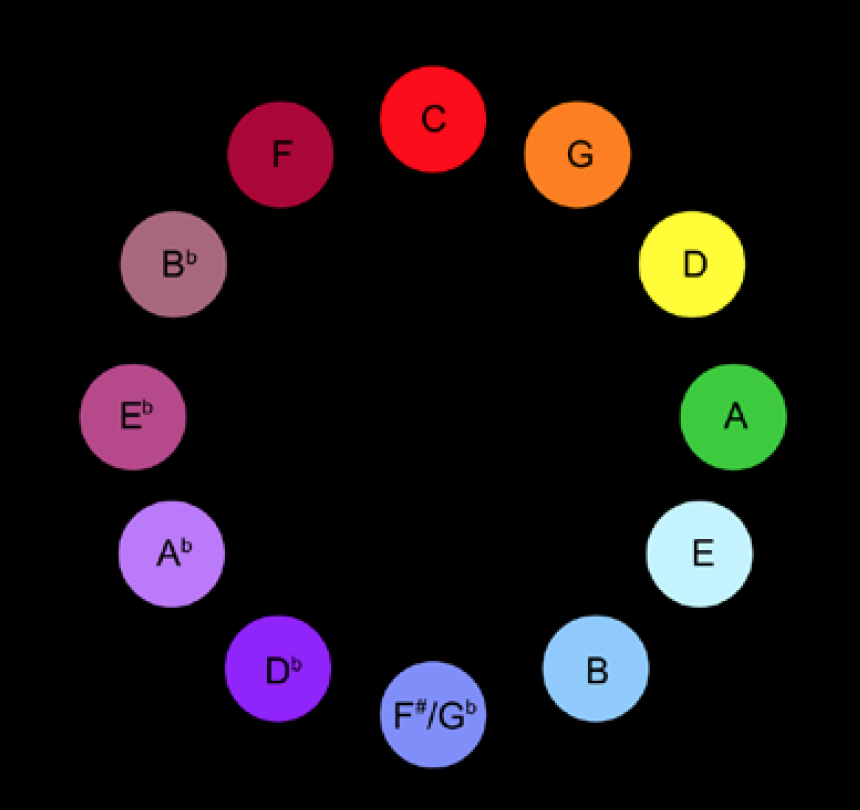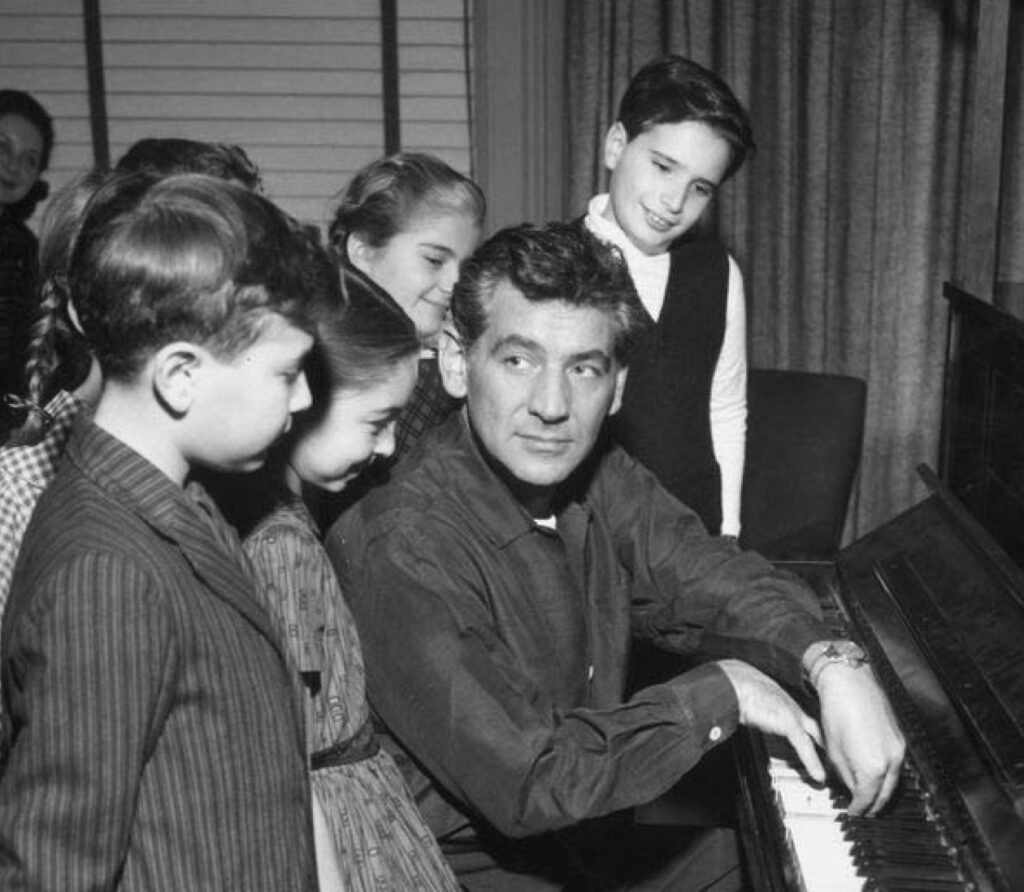Painting with Sounds, Composing with Colors: On Synesthesia
by Elisabet Franch
International flutist Elisabet Franch has been recognized worldwide as the Grand Prix Winner of the 27th World Music Competition, Winner of the Vienna New Year’s International Music Competition (Austria) 1st Prize and Judge’s Trophy of American Protégé Woodwinds and Brass Competition (Carnegie Hall, New York), Anton Rubinstein International Flute Competition (Berlin, Germany), 1st prize (by unanimous decision) Domenico Cimarosa International Flute Competition (Aversa, Italy), Galway Academy Alumnus (Rising Star Award 2013). She is the Former principal flute of Tianjin Symphony Orchestra of China Elisabet is now back in Spain and combines her solo career with teaching as Flute Professor of Centro Superior de Música de Galicia.
"The violins, the deep tones of the double basses, and especially the wind instruments then personified for me all the strength of the twilight hours. I saw all my colors in my mind, they were before my eyes. The wild lines, almost maddened. , they were drawn in front of me. " (Kandinsky, 1913)
The life of Wasily Kandisnky (1866-1944) took an unexpected turn the day she attended a performance of Richard Wagner's Lohengrin at the Bolshoi Theater in Moscow. Until then professor of law (and painter), he left his career and began to study art in Munich. His new direction would follow the path of abstraction, creating works in which he intended that the viewer could perceive the “sound” of color and thus create the same emotions that an abstract art such as music could convey. The publication of the spiritual in Artin 1911 it was his voice within the movement: he theorized abstraction, rejected form and sought spiritual vibrations that would reach the soul of the viewer. The book manages to masterfully solve the difficulties of written expression through sensory and linguistic associations, and compares the spiritual in the life of humanity to a pyramid. The artist's mission is to guide others to the top through his work. Its final consummation was the founding of the movement the blue rider (der Blaue Reiter) together with Franz Marc.
Music and color are inextricably linked and in multiple ways. In some particular cases, the bond is so strong that it creates a different experience: synesthesia. From the Greek syn and aesthesis which mean together and sensation, synesthesia is the variation of human perception through different senses. It is not a disease but rather a phenomenon: the stimulation of one sense automatically and involuntarily causes the stimulation of a second sense that also responds. As they are idiosyncratic perceptions, there are different cases of synesthesia such as seeing colors in sounds, feeling the taste of words or perceiving touch on the cheek when savoring a food.
We were talking before Kandinsky's aesthetic discourse on the spiritual in Art, which leads to the practice of non-figurative abstraction, but… what about music?
“No matter how many times people tell you stories about what music means, forget them. Stories are not what music means at all. Music is never about something. Music just is. Music is notes, beautiful notes and sounds put together in a way that gives us pleasure to listen to it, and that's it. "
(Bernstein, 1958)
Leonard Bernstein's (1918-1970) masterful answer to the question "what does Music mean?" puts an end to the hesitation of many composers and philosophers who, for centuries, had no concrete answer. Like Kandinsky, he defended an era, a movement, a way of composing, and in his response we can perceive a certain spirituality towards art. Let us continue to find more common ground between the two artists: Kandinsky saw colors in Wagner's notes, what happened in the case of Bernstein?
“ I don't know if you see colors when you listen to music, but there are many people who do. I know I always see them. So with all those millions of colors to choose from, the composer's task becomes really tough. " (Bernstein, 1958)
In this way, by revealing such a personal detail, Leonard Bernstein confirmed to the world that he had synesthesia. In his case, it was a variant called chromesthesia, and his reaction to hearing musical sounds was the appearance of spectra and color shapes in his field of vision. He was not the only one: other synaesthetic composers were Franz Liszt, Nikolai Rimsky-Korsakov, Alexander Scriabin, Arnold Schoenberg, Duke Ellington, Olivier Messiaen, Jean Sibelius and György Ligeti. All of them were in their time at the top of the pyramid described by Kandinsky, they were the artist seen as a prophet by taking his art to a higher level.
I continue with my rapprochement between the two artists: Kandinsky proposed the spiritual in art to us in order to get closer to his work; In 1958 Bernstein premiered the television program Young People's Concerts , composed of 53 chapters in which the composer and director sought to awaken interest and musical knowledge in the younger generations. Again, the artist at the top of the pyramid who guides others so that someone reaches the top. The subject of synesthesia was treated in the chapter What is orchestration?, where Bernstein explained that he composed and understood music through “musical colors”. Although we cannot see the forms of colors that he saw, his story allows us to get closer to him, understand his particular way of composing and perceive the orchestration as a combination of “colors” (sounds and timbres) that, when mixed correctly, produce beautiful forms. as if it were an artist painting a landscape.
By way of conclusion, after reading spirituality in Art and after investigating the particular case of Leonard Bernstein, I would like to end by highlighting the power of Art, capable of reaching beyond words to express emotions. Both artists brought us closer to Art, one painting with sounds and the other composing with colors. Perhaps synesthesia in your case was not a phenomenon, but a miracle.
En Español
Universidad Internacional de Valencia, 2021
"Los violines, los profundos tonos de los contrabajos, y muy especialmente los instrumentos de viento personificaban entonces para mí toda la fuerza de las horas del crepúsculo. Vi todos mis colores en mi mente, estaban ante mis ojos. Las líneas salvajes, casi enloquecidas, se dibujaron frente a mí." (Kandinsky,1913)
La vida de Wasily Kandisnky (1866-1944) dio un giro inesperado el día que asistió a una función de Lohengrin de Richard Wagner en el Teatro Bolshoi de Moscú. Hasta entonces profesor de Derecho (y pintor), dejó su carrera y empezó a estudiar arte en Munich. Su nuevo rumbo seguiría el camino a la abstracción, creando obras en las que pretendía que el espectador pudiera percibir el “sonido” del color y crear así las mismas emociones que podía transmitir un arte abstracto como la música. La publicación de de lo espiritual en el Arte en 1911 fue su voz dentro del movimiento: teorizó la abstracción, rechazó la forma y buscó unas vibraciones espirituales que alcanzaran el alma del espectador. El libro consigue resolver magistralmente las dificultades de la expresión escrita por medio de asociaciones sensoriales y lingüísticas, y compara lo espiritual en la vida de la humanidad a una pirámide. La misión del artista es guiar a otros hasta la cima a través de su obra. Su consumación definitiva fue la fundación del movimiento el jinete azul (der Blaue Reiter) junto a Franz Marc.
Música y color están unidos inextricablemente y de múltiples formas. En algunos casos particulares, el vínculo es tan fuerte que crea una experiencia distinta: la sinestesia. Del griego syn y aesthesis que significan junto y sensación, la sinestesia es la variación de la percepción humana a través de distintos sentidos. No se trata de una enfermedad sino más bien de un fenómeno: la estimulación de un sentido provoca automática e involuntariamente la estimulación de un segundo sentido que también responde. Al ser percepciones idiosincrásicas, existen distintos casos de sinestesia como por ejemplo ver colores en los sonidos, sentir el sabor de las palabras o percibir tacto en la mejilla cuando se está saboreando un alimento.
Hablábamos antes del discurso estético de Kandinsky en de lo espiritual en el Arte, que desemboca en la práctica de la abstracción no figurativa, pero…¿y la música?
“No importa cuantas veces la gente os cuente historias sobre qué significa la música, olvidadlas. Las historias no son para nada lo que significa la música. La música nunca es sobre algo. La música simplemente es. Música son notas, bellas notas y sonidos puestos juntos de una forma que nos produce placer al escucharla, y eso es todo.”
(Bernstein, 1958)
La magistral respuesta de Leonard Bernstein (1918-1970) a la pregunta “¿qué significa Música?” pone fin al titubeo de muchos compositores y filósofos que, durante siglos, no tuvieron una respuesta concreta. Al igual que Kandinsky, defendió una época, un movimiento, una forma de componer, y en su respuesta podemos percibir cierta espiritualidad hacia el arte. Prosigamos a encontrar más puntos en común entre ambos artistas: Kandinsky vio colores en las notas de Wagner, ¿qué sucedía en el caso de Bernstein?
“No se si veis colores cuando escucháis música, pero hay mucha gente que sí. Yo se que siempre los veo. Así que con todos esos millones de colores entre los cuales escoger, la tarea del compositor se convierte realmente dura.” (Bernstein, 1958)
De este modo, revelando un detalle tan personal, Leonard Bernstein confirmaba al mundo que tenía sinestesia. En su caso se trataba de una variante denominada cromestesia, y su reacción al escuchar sonidos musicales era la aparición de espectros y formas de color en su campo de visión. No era el único: otros compositores sinestésicos fueron Franz Liszt, Nikolai Rimsky-Korsakov, Alexander Scriabin, Arnold Schoenberg, Duke Ellington, Olivier Messiaen, Jean Sibelius y György Ligeti. Todos ellos estuvieron en su época en la punta de la pirámide descrita por Kandinsky, fueron el artista visto como profeta al llevar su arte a un nivel superior.
Prosigo con mi acercamiento entre ambos artistas: Kandinsky nos propuso de lo espiritual en el arte para poder acercarnos a su obra; en 1958 Bernstein estrenó el programa televisivo Young People’s Concerts, compuesto de 53 capítulos en los que el compositor y director buscaba despertar el interés y el conocimiento musical en las generaciones más jóvenes. Otra vez, el artista en la punta de la pirámide que guía a otros para que alguno alcance la cumbre. El tema de la sinestesia fue tratado en el capítulo ¿Qué es la orquestación?, donde Bernstein explicó que componía y entendía la música a través de “colores musicales”. Aunque no podamos ver las formas de colores que él veía, su relato nos permite acercarnos a él, entender su particular modo de componer y percibir la orquestación como una combinación de “colores” (sonidos y timbres) que mezclados correctamente producen unas formas bellas, como si se tratara de un artista pintando un paisaje.
A modo de conclusión, tras la lectura de la espiritualidad en el Arte y tras investigar el caso particular de Leonard Bernstein, me gustaría terminar resaltando el poder del Arte, capaz de llegar más allá que las palabras para plasmar emociones. Ambos artistas nos acercaron al Arte, uno pintando con sonidos y el otro componiendo con colores. Tal vez la sinestesia en su caso no fue un fenómeno, sino un milagro.
ANEXO

Figura 1. Asociación color-tono en círculo de quintas. A. Scriabin.

Figura 2. Leonard Bernstein (1958), Young People’s Concerts
© Getty / CBS Photo Archive
BIBLIOGRAFÍA
Kandinsky, W. (1911). de lo espiritual en el Arte. Premia editora S.A.
Roden, D. (2011). Sounds like Blue? The Boston University Undergraduate Science Magazine. https://www.bu.edu/synapse/2011/11/22/sounds-like-blue/
Tobisch, L. (2018). Seeing is hearing - what are synaesthesia and chromesthesia? France Musique https://www.francemusique.fr/en/seeing-hearing-what-are-synaesthesia-and-chromesthesia-20763
Tobisch, L. (2018). Five lessons about music by Leonard Bernstein that we must never forget. France Musique. https://www.francemusique.fr/en/five-lessons-about-music-leonard-bernstein-we-must-never-forget-20489
Torres, L. (2015). Kandinsky, el jinete de la abstracción. Radio Televisión Española. https://www.rtve.es/noticias/20151019/kandinsky-jinete-abstraccion/1239647.shtml
